
Welcome to CivilGEO Knowledge Base
Welcome to CivilGEO Knowledge Base

Welcome to CivilGEO Knowledge Base
Welcome to CivilGEO Knowledge Base
The Classify Land Use command uses AI machine learning to geospatially analyze the orthophoto base map and compute the corresponding land use. The user can select areas from the orthophoto base map to train the software, and then machine learning examines the entire orthophoto base map for similar land use areas. The software then creates a polygonized shapefile containing land use areas extracted from the orthophoto base map. The Draw Land Use command can be used to cleanup areas where the Classify Land Use command did not work completely. Refer to this article in our knowledge base to learn more about this command.
The user first trains the software to recognize various land types based upon selected target areas on the orthophoto. The software reviews the colors and patterns of the selected targets, and then segments the remaining orthophoto into regions to match selected targets using raster recognition. From this, it merges adjacent matching land use regions and creates a thematic land use layer, as shown below.
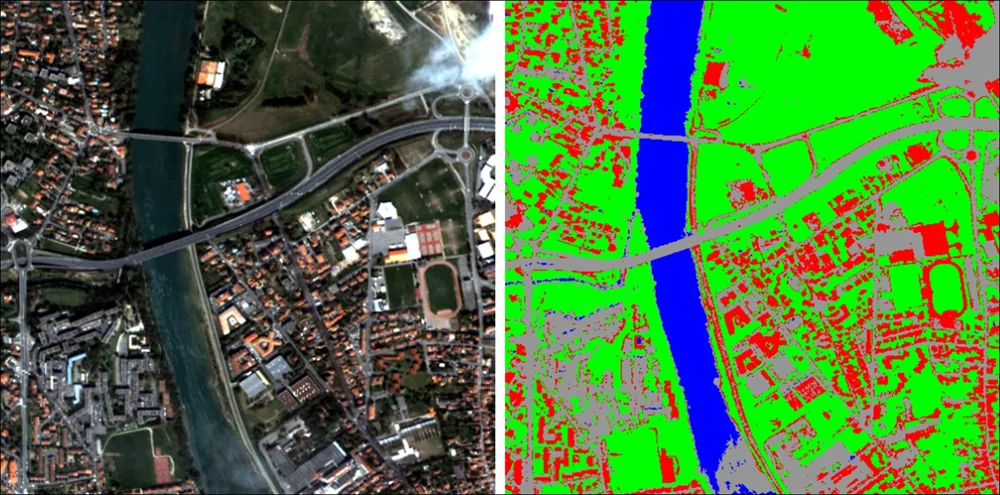
From the Map Data ribbon menu, click the Classify Land Use dropdown menu and select the Classify Land Use command.

Selecting this command causes the following panel to be displayed, floating to the right side of the Map View.
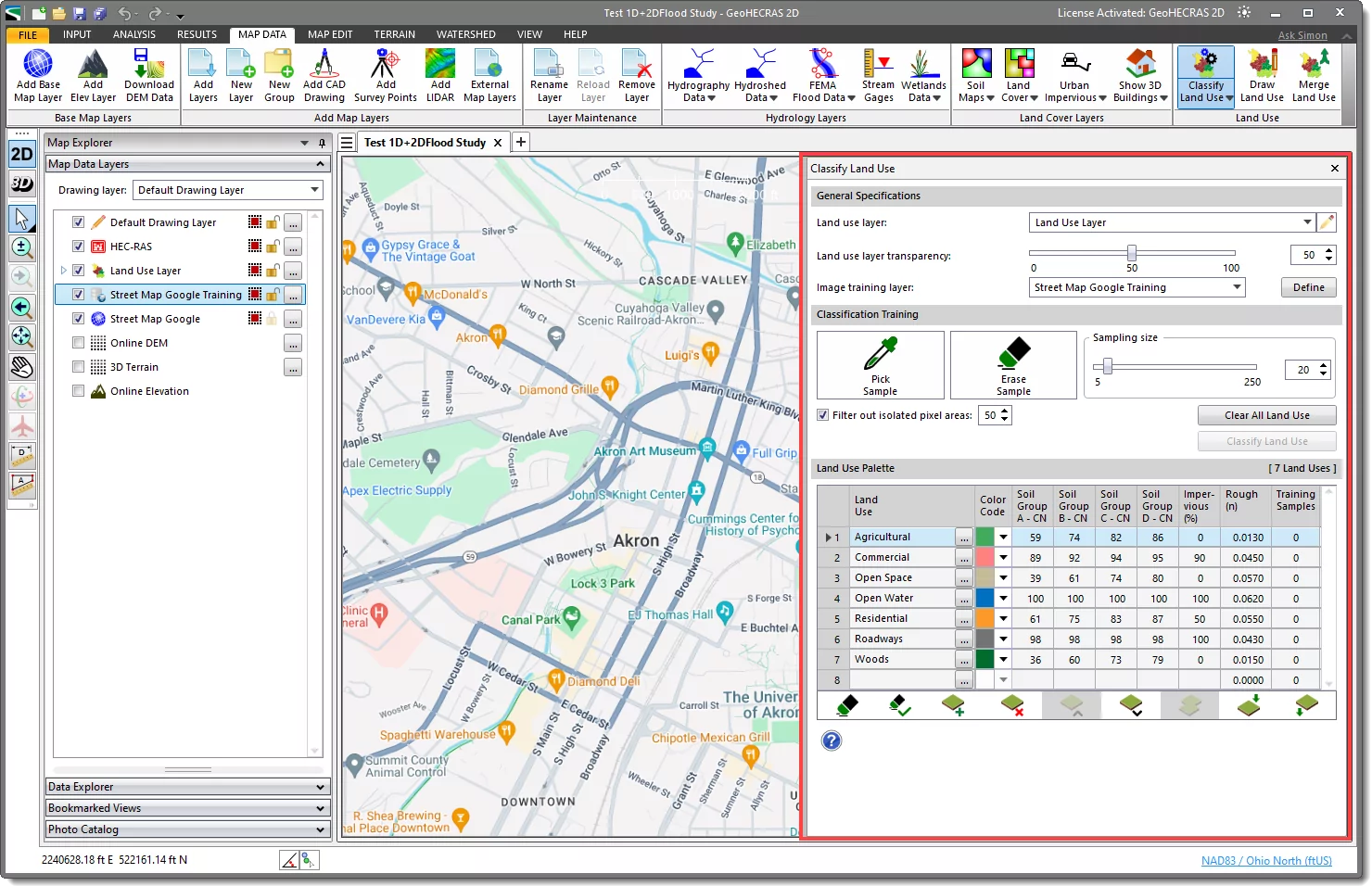
When selecting this command, if the Map View is in 3D view mode (even if viewing from directly above) the software will force the Map View into 2D view mode. This is because the Map View must be in 2D mode to perform this task.
Note that prior to using this command, the user needs to assign a CRS to the project. Refer to this article in our knowledge base to learn about how to assign a coordinate reference system to a project.
The various subsections of the Classify Land Use panel are discussed below.
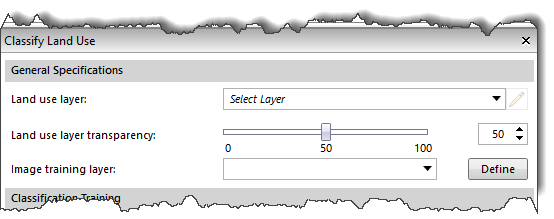
The General Specifications section of the Classify Land Use panel is used to define the following properties:
This entry is used to define the land use layer in order to add the land use polygon data. Clicking on the pencil icon will allow the user to rename the selected land use layer. In addition, at the top of the listing is an Add New Layer entry which will create a new layer.
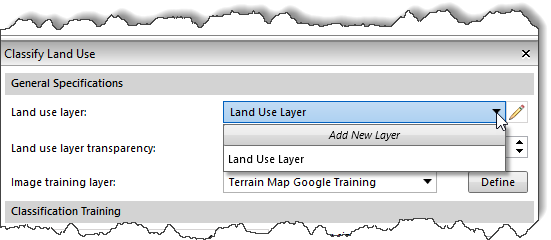
This option is used to adjust the transparency of the land use being painted using the horizontal slider, allowing the user to see through the defined land use areas to the underlying displayed map. Default transparency value is 50%.
This option is used to define the image source and extents of the training layer. Clicking on the [Define] button will cause the software to open the Define Image Training Layer dialog box.

The Classification Training section of the Classify Land Use panel is used to train the software to recognize various land uses for the loaded orthophoto imagery.
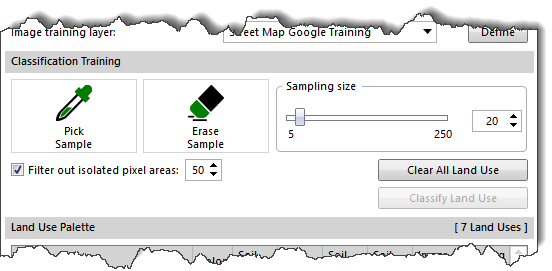
The following details how to train the software to classify land uses from the loaded orthophoto imagery.
The Pick Sample tool is used to train the software to recognize land use areas from the loaded orthophoto imagery.
To use the Pick Sample tool, follow the steps below:
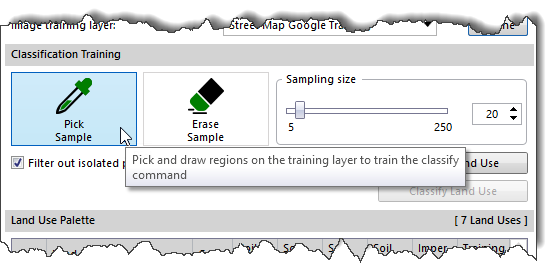
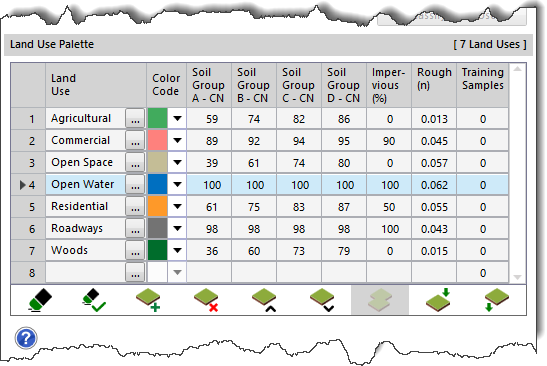
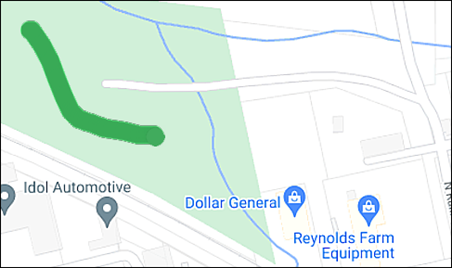
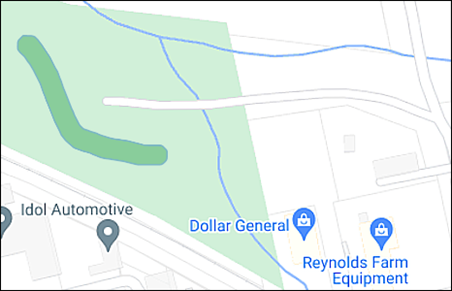
If more training sample area needs to be added to an existing sample, simply start painting-in more sample areas. Where a new training sample area overlaps an existing sample area, the areas are merged into a single polygon.
The following observations apply to the Pick Sample tool:
The Erase Sample tool can be used to erase all or part of a land use sample polygon area.
To use the Erase Sample tool, follow the steps below:
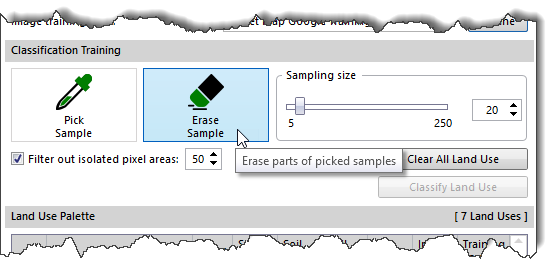
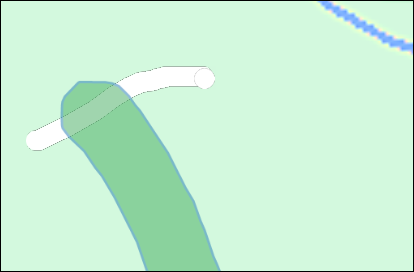
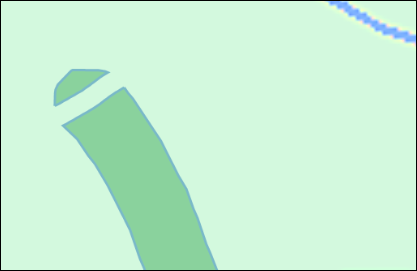
The following observation applies to the Erase Sample tool:
The Sampling Size slider allows the user to adjust the nib size used to select training samples from the loaded orthophoto imagery.
The [Clear All Land Use] button causes the software to remove the classified land use polygon areas from the Map View. This command allows the user to iteratively select training samples to better inform the software how to classify land use areas from the loaded orthophoto imagery.
The [Classify Land Use] button causes the software to classify land use polygon areas from the loaded orthophoto imagery based upon the defined training samples.
This entry is checked by default. This checkbox entry causes the software to reclassify small, isolated regions of pixels that might give a “salt and pepper” or speckled appearance to the nearest land use classes. Small regions with pixel count less than or equal to the defined pixel threshold will disappear; being essentially dissolved away based on the closest surrounding cell land use types. A default threshold value of 50 pixels is provided.
The Land Use Palette section of the Classify Land Use panel is similar to what is provided in the Draw Land Use command. This section is used to define the various land uses and their associated properties, as well as allow the user to easily switch between various land uses while painting the land use areas onto the Map View.
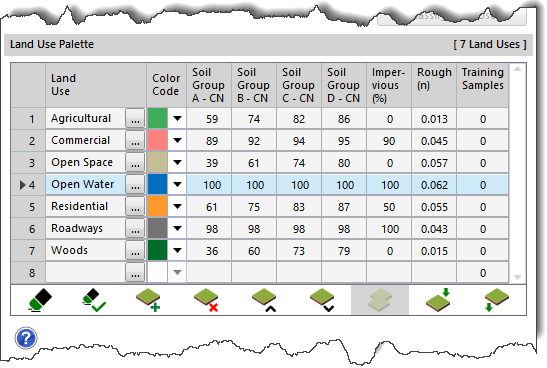
![The […] lookup button](/wp-content/uploads/sites/25/2023/04/Classify-Land-Use-Command-Img-16.png)
The following button commands are listed at the bottom of the land use palette.
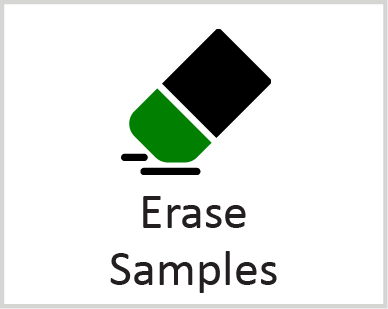
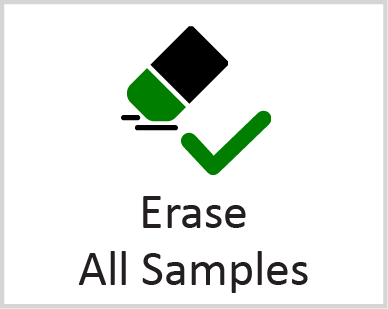
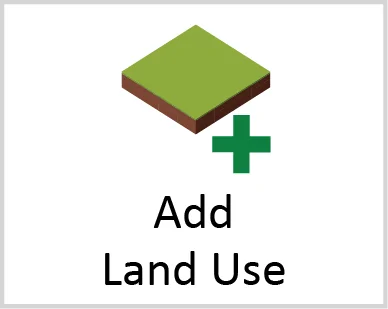
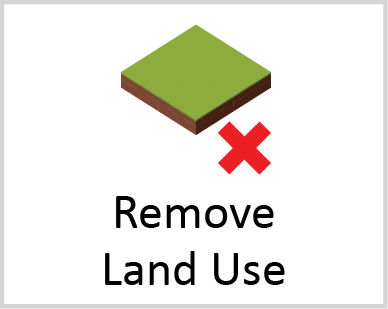
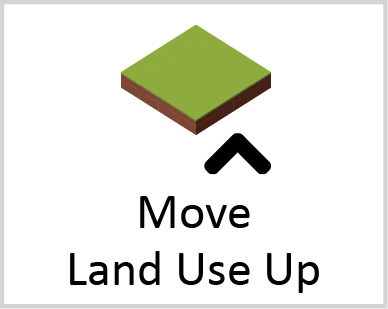

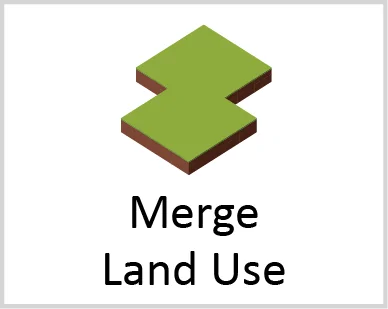
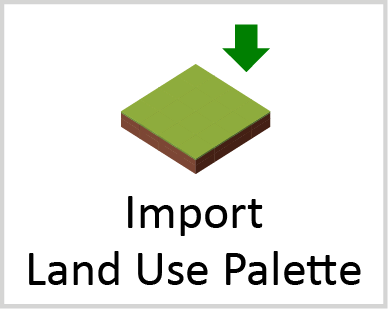
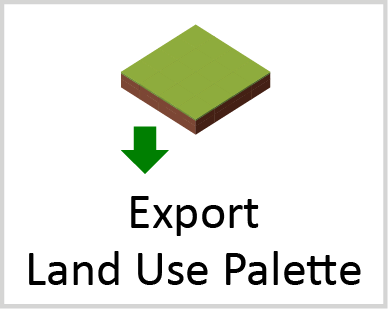
Refer to this article in our knowledge base to learn more about the Land Use Properties dialog box.
 1-800-301-02-955
1-800-301-02-955
 608-729-5100
608-729-5100
(US and Canada)
 [email protected]
[email protected]
 +1 608-729-5100
+1 608-729-5100
CivilGEO India
Graphix Tower, A-13 A
3rd Floor, Sector 62
Noida, Uttar Pradesh 201309
IndiaTel:
1-800-301-02-955 or
+91 022-3831-8601
CivilGEO United States
8383 Greenway Blvd
6th Floor
Middleton, WI 53562
USATel:
608-729-5100 or
800-488-4110
Copyright © CivilGEO, Inc. All rights reserved. The CivilGEO logo, “GeoSTORM”, “GeoHECHMS”, “GeoHECRAS”, and “Ready To Engineer” are registered trademarks of CivilGEO,Inc.
All other brands, company names, product names or trademarks belong to their respective holders.
We use cookies to give you the best online experience. By agreeing you accept the use of cookies in accordance with our cookie policy.
When you visit any web site, it may store or retrieve information on your browser, mostly in the form of cookies. Control your personal Cookie Services here.
The ZoomInfo WebSights snippet drops three cookies to track Unique Visits:
1. _pxhd - Related to the Perimeter X security layer (Perimeter X isused to prevent bot attacks).
2. _cfduid - Related to the CloudFlare security layer (CloudFlare is the Network Security protocol that ZoomInfo uses to orchestrate the rate limiting rules).
3. visitorId - This is how WebSights identifies recurring visitors








